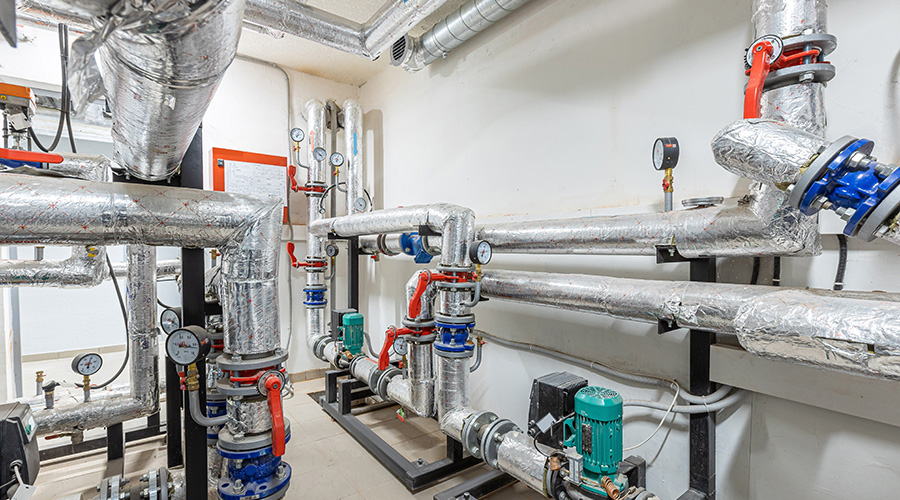Chiller Maintenance and Operations Improves Energy Efficiency
Early on in their efforts to make the hospital more efficient, managers at Highland did address the low-hanging fruit. But they also built support for capital projects. The hospital bought a 750-ton electrical chiller 10 years ago, when it was the most efficient unit on the market. Managers also specified a direct digital control (DDC) system to replace the hospital’s pneumatic controls.
Those two purchases are primary drivers of the hospital’s energy efficiency, but ongoing maintenance practices and operational improvements also help sustain that performance.
Technicians operate the chiller system at lower temperatures during the peak season — something not all chillers have the capacity to do, says Charlie Martella, Highland’s operating engineer. Lowering temperatures does require using energy upfront, but putting the load on the plant demands less energy than running the 15 HVAC units throughout the building at 100 percent to satisfy the lower temperatures.
“Even though it’s difficult to get real hard evidence on the savings of that (practice), we feel that it has improved not only the conditioning operation, but we do think that we are saving money by doing that,” Martella says.
The hospital also focuses on cooling-tower maintenance, including filtering condenser water down to 25 microns, a level invisible to the naked eye. A filter in a typical swimming pool, on the other hand, generally filters water to 50 microns, which is visible to the naked eye, Martella says. Cleaner water has improved the condition of chillers noticeably when technicians break them down for seasonal maintenance, Martella says.
“Good water treatment is always essential to get the longevity and efficiency out of your equipment,” he says.
Another big component of the hospital’s HVAC efficiency effort is variable-frequency drives (VFDs). Managers specified VFDs for the chiller’s primary and secondary loops, as well as cooling-tower fans.
“If people have a lot of three-way valves out in their systems, that’s an opportunity to go from primary circulation systems to primary-secondary and eliminate a lot of that pumping horsepower,” Zanghi says.
Related Topics:















